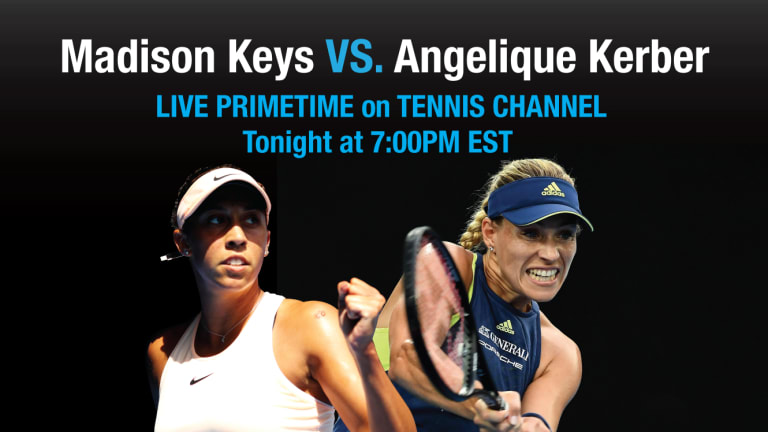As I witnessed this inside Rod Laver Arena, I conjectured about what Nadal would be thinking at that moment with this imagined quote: “And I have no one to blame but myself."
As I mentioned last week, while every player is more vivid to watch up close, Cilic is particularly aided by proximity. For a man of his size, he is an exceptional mover, sweeping across the court to absolutely brutalize backhands. While there are moments when nerves reduce the shape of his forehand—causing it to go flat and long—a relaxed Cilic heavily envelops his opponents.
Said Cilic, “I was always in that process where I want to keep going with my own game and try to lift up, lift up, keep pushing as much as I can. So extremely pleased with the performance.”
Fond as we are of calling tennis a game of inches, let it be noted that Cilic stands 11 inches taller than Nadal’s prior opponent, Diego Schwartzman. Added to this was a complete change in conditions. Sunday’s match had been the muggy soup of a Midwest summer. This evening, the temperature was at least 20 degrees cooler, the weather associated with a San Francisco evening. All that made it much harder for Nadal to compromise Cilic’s contact point.
The third set was superb. Much of what has long made Nadal a fan favorite surfaced—the whipped topspin forehands and harsh jabs of the backhand most of all. Cilic saved a set point at 4-5 and soon came a tiebreaker. At 5-all, Cilic overcooked a forehand long. From the ad court, Nadal played a beautiful point that conjured up memories of great lefthanders past and present: serve into the forehand, jump on Cilic’s tepid return to strike a down-the-line forehand approach, field the crosscourt pass with a down-the-line backhand volley solid enough to elicit a lob, close with an overhead.
It’s peculiar and even downright disturbing to see a player up two sets to one suffer an injury at such an advantageous stage. Would Nadal have been hurt if he’d maintained his second-set lead? Had Cilic done just enough to inflict pain?
“Yeah, he was playing very aggressive,” said Nadal.”
But once Nadal had pretty much let the fourth slide away, was it possible the fifth could have curtain dropped so rapidly? A man was once asked, how did you go bankrupt? Two ways—gradually and suddenly. Just like that, the possibilities of another sublime Nadal-Federer final had vanished. Our Nadal-Federer soup, sandwiches, gravy—gone, gone, gone.
Ever since Cilic won the 2014 US Open, he has occupied rare and awkward territory. That one Slam victory had been his upgrade into tennis’ first-class section. But of all the Slams a player earns, none is probably more difficult than the second. The first is a surprising ride into excellence, the aspirant simply playing one point after another and then arriving at nirvana. The third is a journey into the familiar, an experienced champion taking another lap around the worn track.
Cilic has accrued enough results to enter the airline club lounge and see if he’ll be given another chance to fly at the front of the plane. The good news is that he’s one of only two players still in the men’s draw who’ve won a major. The bad news is that the other is not just a passenger, but often considered the pilot. His name is Roger.
Watch Madison Keys take on Angelique Kerber in the Australian Open quarterfinals—LIVE on Tennis Channel 7 p.m. ET
